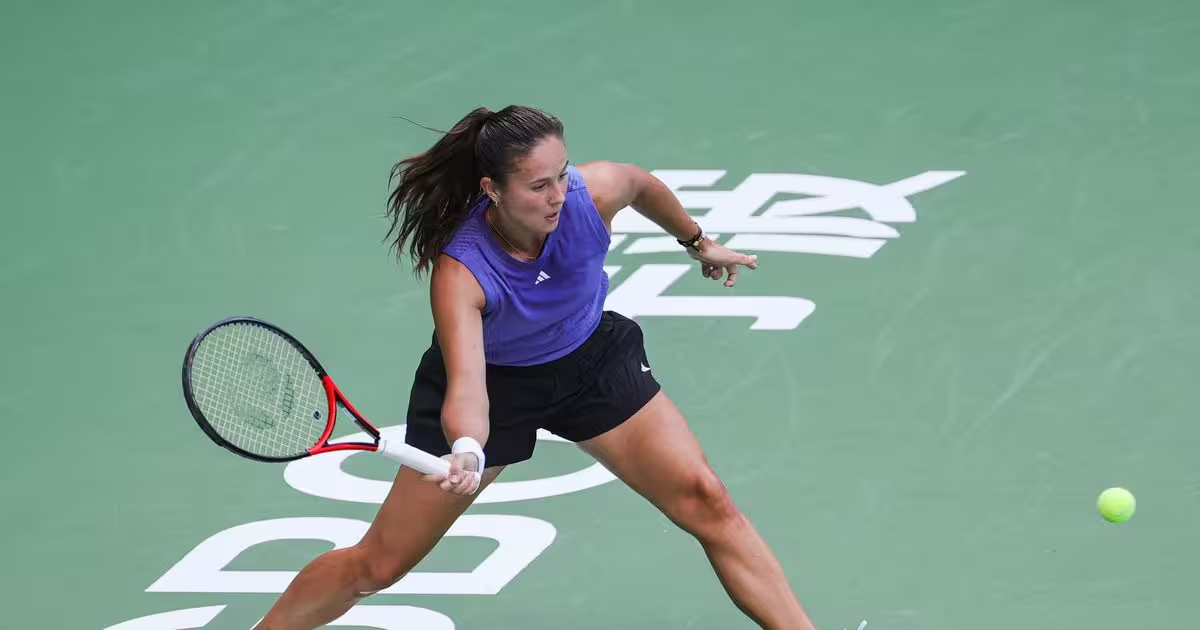No.5 seed Daria Kasatkina came through a thrilling quarterfinal at the Ningbo Open to make her sixth semifinal of 2024, saving two match points in the deciding tiebreak to edge Yulia Putintseva 6-4, 1-6, 7-6(6) in 2 hours and 41 minutes.
Mirra Andreeva also advanced to the last four when No.4 seed Barbora Krejcikova retired trailing 7-6(5), 3-2 due to a back injury. The 17-year-old will play her third semifinal of the season.
Ningbo: Scores | Draws | Order of play
Kasatkina also trailed 4-1 in the first set and 4-2 in the third before winning her second match in three encounters with Putintseva. She had previously defeated the Kazakhstani in the second round of Wimbledon 2018, but fallen 3-6, 6-2, 6-2 in the third round of Madrid in May.
“I didn’t want three sets, for sure,” said Kasatkina after her 23rd match of the season to go the distance. “But I was expecting something like that, because always when I play against Yulia something like that happens.
“I feel the whole match I was always down in the score, but I knew I would have a chance to come back, and I did. Tennis is like that. If you fight, 99% of the time you get your chance. I thought the level was pretty high — we fought our butts off through this match.”
Kasatkina will next face No.8 seed Paula Badosa, who defeated No.6 seed Beatriz Haddad Maia 6-3, 6-2.
A steal for Kasatkina: Few of the statistics favored Kasatkina in the match. She won fewer points than Putintseva (95 to 104), struck fewer winners (33 to 37) and committed more unforced errors (47 to 43). The World No.11 was also almost undone by eight double faults, including two in the third-set tiebreak.
However, Kasatkina was able to find her best tennis in crucial passages of play. Down 4-2 in the third set, she cranked up her game to its most aggressive, unleashing on her forehand as she inched her way back to 4-4. A winner off that wing also saved one of two match points down 6-4 in the tiebreak.
Putintseva’s variety was on full show throughout, and she delighted the crowd with delicately spun volleys and down-the-line redirections as well as her signature drop shot. However, the latter was as much weakness as strength this time. In the opener, a series of poorly executed drop shots allowed Kasatkina to find easy winners to turn the set around. As the match went on, Kasatkina’s speed and anticipation enabled her to put away even the better versions of the shot.

